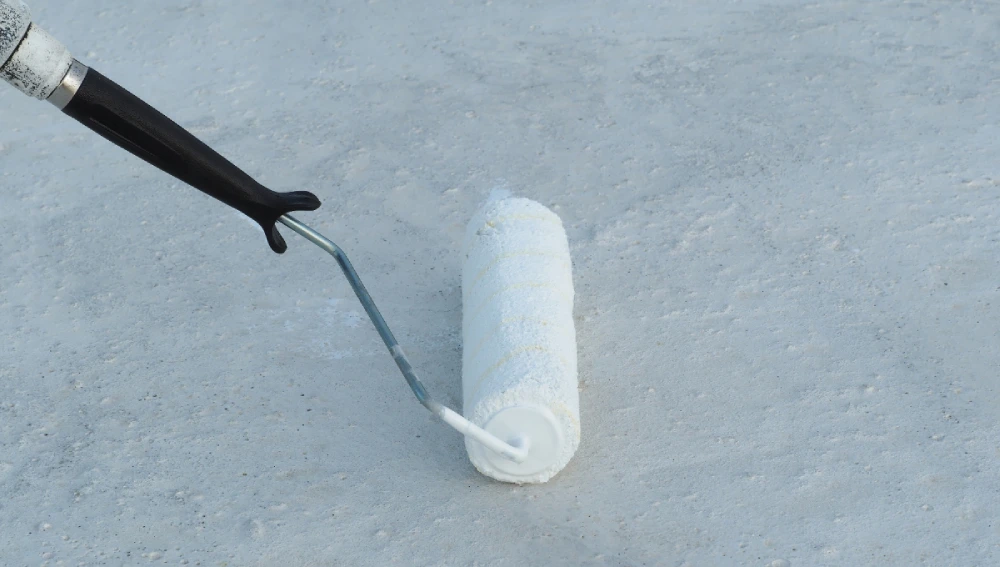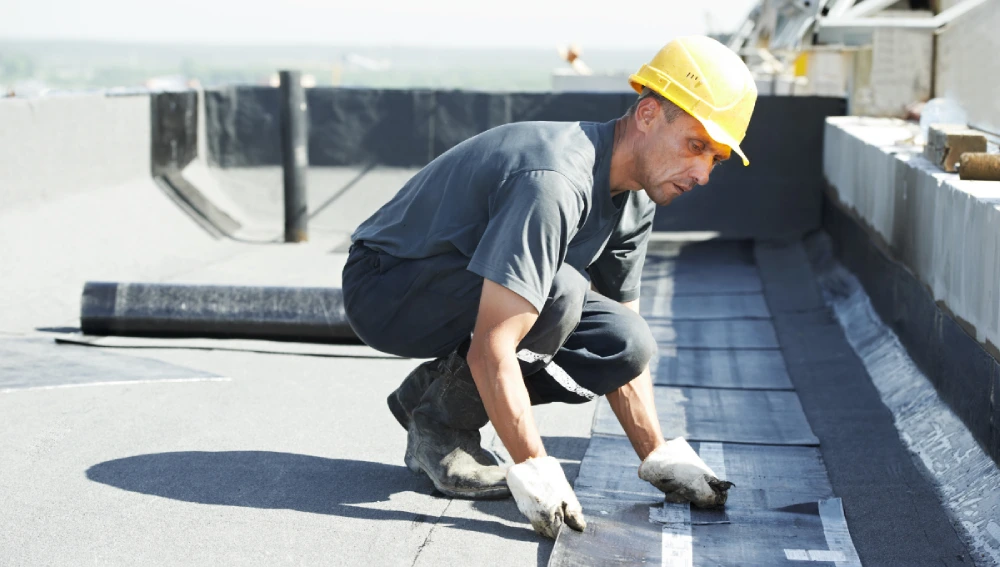In pursuing energy efficiency and environmental sustainability, identifying solutions for cooling buildings has become important. Among those solutions, using white cement to cool the roof is an innovative approach. White cement was well known for its aesthetic appeal and high reflectance. They have various advantages when used on roofs, mainly in hot climates.
This blog explores the details of using white cement for cooling roofs by emphasizing the mechanism, effectiveness, and practical applications.
Composition of white cement

White cement is normally similar to ordinary Portland cement. However, they differ in raw materials and manufacturing process as they get a pure white color. The main components of white cement are:
- Limestone with high carbonate and low iron
- Clay with high alumina and low iron
- Rubber or Oil
- Selenite or Gypsum
The chemical composition of white cement is,
| Composition | Percentage (%) |
| Calcium Oxide | 62.01 |
| Silica | 18.33 |
| Alumina | 4.8 |
| Ferric oxide | 3.2 |
| Sulfuric anhydride | 3.15 |
| Magnesium oxide | 0.83 |
| Potassium oxide | 0.69 |
| Sodium oxide | 0.18 |
| Titanium oxide | 0.01 |
Properties of white cement
The properties of white cement and their values are as follows:
- Fineness- 395 m²/kg
- Setting Time – 100 min
- Compressive Strength – 1 day (21 MPa), 2 day (38 MPa), 7 day (61 MPa), 28 day (74 MPa).
- Compact Density – 3150 kg/m³
- Bulk Density – 1100 kg/m³
- Brightness- 87%
The Science of Roof Cooling

Thermal Reflectance
White cement’s strong thermal reflectivity is primarily responsible for its ability to effectively cool roofs. The ability of a substance to reflect sunlight and aid in lowering absorption is known as thermal reflectance.
White cement has a solar reflectance value of 80–95%. This suggests that 80–95% of the solar energy it receives can be reflected by it.
In contrast, traditional dark roofing materials typically have a lower solar reflectance index, normally 5 to 20%.
Emissivity
Another property of white cement is its emissivity. Emissivity is the ability of a material to emit absorbed heat. The normal range of emissivity for white cement is 0.85 to 0.95. The material that has high emissivity can release the absorbed heat faster. This helps in maintaining a cooler roof surface, which leads to lower indoor temperature maintenance.
Heat Transfer Equations
The process of heat transfer through the roof can be explained with the help of the heat balance equation:
q= εσT4
Here, Q represents the net heat flux (W/m²),
ε is the emissivity,
σ is the Stefan-Boltzmann constant (5.67×10−8 W/m²K⁴),
T is the temperature (K).
For white cement, which has a high reflectance and emissivity value, the net heat flux is considerably lower when compared to traditional roofing materials. This helps in the reduction of the quality of heat transferred through roofs. This helps in improving the cooling effect and energy efficiency in buildings.
Benefits of White Cement Roofs
Energy Savings
White cement roofs can save energy by reflecting most of the sunlight and also efficiently emitting the absorbed heat. Buildings that have reflective roofs can get cooling energy savings that range from 20 to 40%.
There is a study that has been conducted in tropical regions that showed that white cement roofs can reduce indoor temperatures by up to 2 to 4 degrees Celsius. This reduction in temperature is reflected in the 30% reduced usage of air conditioning, which saves energy.
Improved Durability
In addition to improving insulation, white cement roofing extends the life of roofing components. White cement’s high reflectivity reduces thermal cycling, or the expansion and contraction of materials due to temperature variations. Heat cycling is a common cause of material breakdown.
White cement can contribute to a longer-lasting roof and lower maintenance costs by speeding up this process.
Impact on Environment
The energy savings from white cement roofs lead to a reduction in greenhouse gas emissions. Also, white cement production normally involves less carbon dioxide compared to traditional cement production. This is because of the raw materials used and the process of production. This makes white cement more environmentally friendly.
Practical Application of White Cement Roofs
General application steps
- Preparation of the surface by cleaning and repairing the existing roof.
- Primer can be used to improve the adhesion between the roof and white cement.
- Coating the white cement in layers to get the desired thickness and coverage.
- Curing the cement to get full strength and reflexivity.
Application Techniques
There are various methods for applying white cement to roofs, and each method has its benefits:
Direct Application
White cement can be applied directly as a thin layer over the existing roof materials. This method is easy and cost-effective, providing immediate benefits like increased reflectance and emissivity.
Precast White Cement Tiles
White cement tiles that are precast can be installed on roofs. These tiles are highly durable, and they also provide a uniform reflective surface. This helps in improving the aesthetic appeal of the roof and also provides cooling benefits. This offers cooling advantages in addition to enhancing the roof’s visual attractiveness. The sun reflecting index (SRI) of white concrete tiles ranges from 71 to 93, while their emissivity falls between 0.85 and 0.90.
Case Studies
A study has been published in Nature Geoscience. It has been found that replacing traditional dark roofs with white roofs could reduce heat waves by up to 2 degrees Celsius. These cooling effects can be extended beyond urban areas to rural areas.
New York City has also implemented the white roofs technique by painting over seven million square feet of rooftops. The main aim is to reduce the temperature and fight urban heat islands. This white roof reflects solar radiation and decreases heat absorption, along with lowering the cool energy demands.
Conclusion
Using white cement for roof cooling can provide a robust solution for reducing energy consumption and improving the comfort of the building during the summer. Its reflectivity and emissivity can lower the heat reflux through roofs, resulting in cooler indoor temperatures and energy savings. As there is an increase in urbanization and climatic change, the demand for energy-efficient solutions will naturally increase. White cement roofs can be one solution that helps cool buildings and reduces environmental impacts.
FAQs
White cement reduces energy consumption by lowering cooling needs in buildings.
The initial setting time of white cement is around 100 minutes, while the final setting time is generally less than 10 hours.
Thermal reflectance is the ability of a material to reflect sunlight and reduce heat absorption.
The Solar Reflectance Index of white cement ranges from 80-95%.

